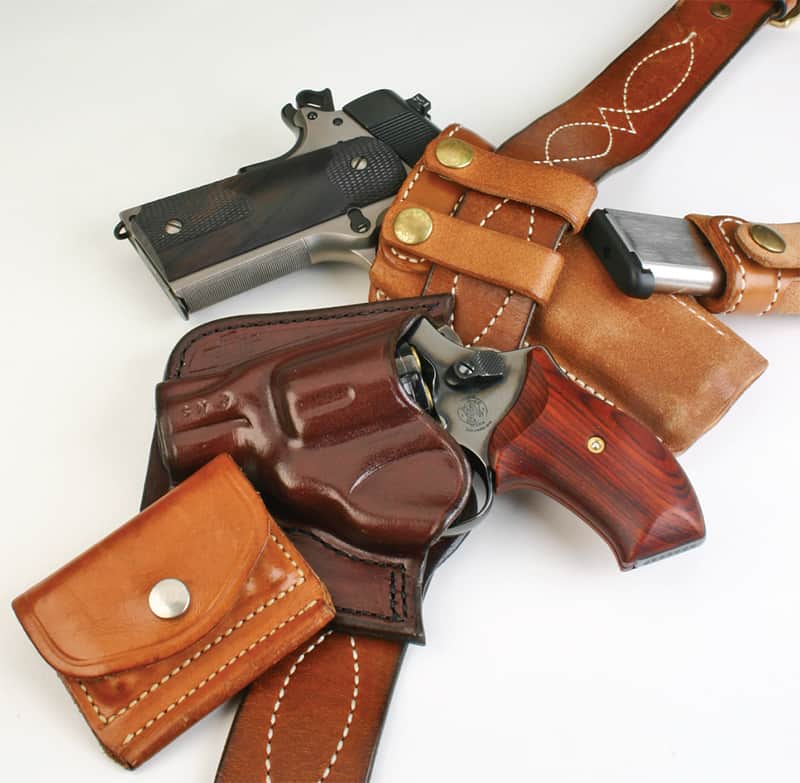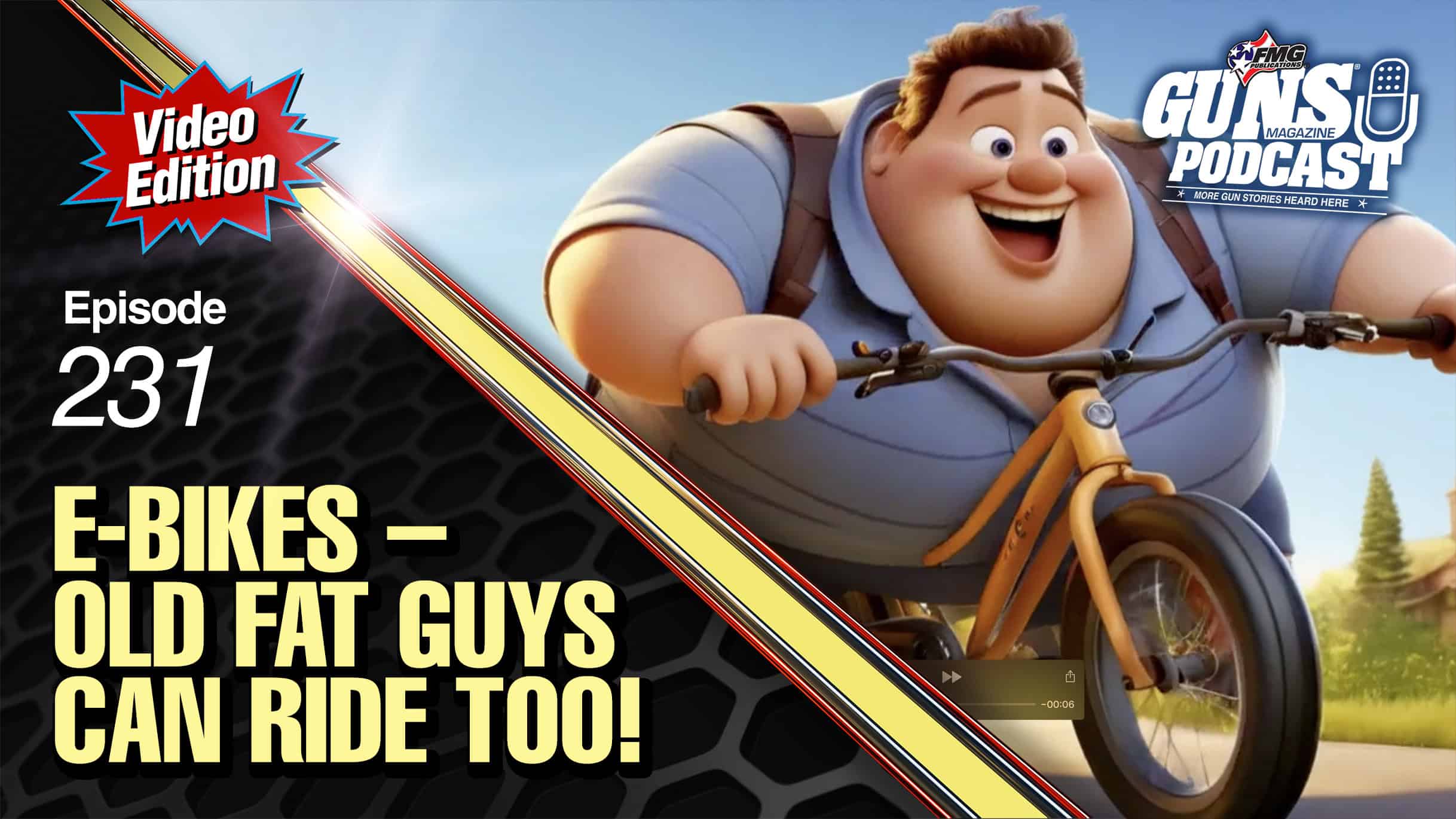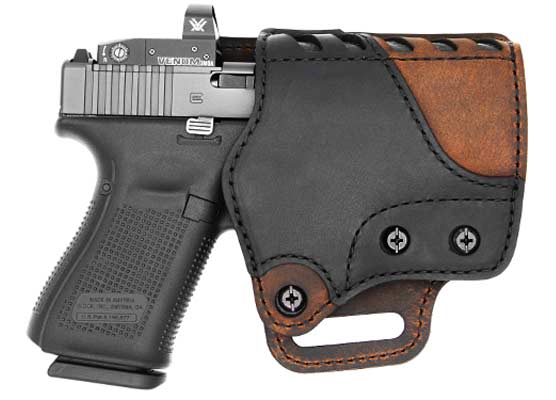Handguns And Holsters For Concealed Carry
With the current trend of more states implementing concealed carry handgun laws and more people taking advantage of this fact, a review could be in order of what it is we are about to do. There’s a lot here we should discuss, but let’s start by concerning ourselves with the preliminary selection of the handgun, the topic of modifying our handgun, and how we might carry it.
Handgun Selection
Some points of consideration might be of interest before you choose your personal defense handgun. Handguns in and of themselves are not always the most effective fight stopping tools. In fact, most people shot by handguns survive. This is of course okay with us as our first interest is only to make sure our threat simply stops doing whatever it is we started shooting at them for in the first place — i.e. coming at us with a knife.
The range will probably be short so we may select a weapon that is of reasonable size but yet powerful enough to be effective if the shots fired are placed well. A big gun or the biggest gun you can and really will carry is a good idea remembering if it’s of a reasonable size and somewhat comfortable you will carry it more often.
Carry at least one full reload capability. You may not always need the ammo but you may in fact need a spare magazine if the one in the handgun somehow becomes damaged. As a case in point, I recall sliding out of a squad car seat in a hurry once and ripping the base plate from the magazine of my holstered pistol. As the base plate came off all the ammunition was ejected onto the front seat, so as I exited the squad car I did so with a single shot semi-automatic handgun.
A few additional thoughts: Melt or round the corners as much as possible — a handgun is not supposed to feel like a box of fresh razorblades when you handle it. Be guarded about oversize safeties, magazine release buttons or extended slide releases — all this stuff is often inclined to snag or hang up while being carried or the handgun is being drawn.
I believe the Three “S” rule is a good guideline: Keep it Stock, Small and Smooth. Stock as in the way it came from the factory, and as small and smooth in operating controls as possible.
Add to your defensive handgun only those things which solve a problem that really exists. As an example, a left-handed shooter carrying a Browning Hi-Power will need an ambidextrous safety.
Holster Requirements
The holster you select should have a series of things that will make the whole effort more productive. For safety, the trigger guard should be covered while the handgun is holstered. The holster should securely retain the handgun in case you wind up rolling around in the dirt.
Many a gunfight starts as a fistfight and many an “I thought it was gonna be a gunfight” turns into a fistfight. If I have it out and put it back in the holster under some duress I want it to stay put in case it goes from a gunfight to a fistfight and back to a gunfight. I don’t want to have to chase my pistol around the blacktop in the “Fastmart” parking lot, thank you very much.
So then the holster has to do a couple of things at once, reliability being a major consideration. In short, does it come out if I need it and does it stay put if I don’t? Add to this a degree of comfort — if the holster is all of the aforementioned and also reasonably comfortable you will be inclined to have it with you.
Consider the arc of the draw; does the muzzle cross your legs when you draw while seated in the car? Does the muzzle cross your support arm as you draw from a shoulder or cross draw holster? So you know, in both cases rather than being faulty holster design the problem might be one of faulty technique that allows the muzzle to cover any portion of you while drawing from these two types of holsters, but you get the point.
Holster Design
This part is actually easy. Here are a few selection points to consider:
*The holster should allow a full firing grip sans the finger on the trigger while in the holster.
*The belt should be of stout construction and fit the loops of your pants and the slots or straps of your holster choice.
*The holster should not move during the drawing stroke.
*The holster top or access should remain “open” so it can be drawn and put back with one hand and either hand in case of injury.
*If your holster has a security strap the strap should be utilized at all times on the street and in training — no exceptions.
It may seem that we’re demanding a lot here, but equipment selection is actually the easy part. After that, all that is required is practice — sort of.

Get More Carry Options content!
Sign up for the newsletter here:



